|
Score: 96/100 (9.6 out of 10)
The Off-Balance Theory will undoubtedly go down as one of the best non-fiction books of the contest. It is possibly one of the best non-fiction books of 2023! What a special, special book by an engineer who saw the parallels between the principles/concepts in that field and other fields. What makes it so special? Well, The Off-Balance Theory is multi-faceted in its approach. On one hand, it is a phenomenal self-help book that can help guide an individual to reframe and reorganize their life and thinking to be more successful and less stressed. It is incredibly scientific and theoretical in its approach, using facts, research, and statistics from economics, physiology, biology, and other physical and social sciences. This has to be one of the most ambitiously researched and written non-fiction books of the season! On the other hand, it is a highly philosophical book, comparing the human mind and body to a system—where one goes, the other follows. The book follows the concept of system theory. One of the major takeaways from this is that almost everything in our world runs as part of some sort of system, whether an ecological, economical, biological, or some other system. The key to getting the best results possible in all that you do is understanding and taking advantage of these systems. For example, if you're in a chess match against someone who plays a Colle-Koltanowski system opening, a French Defense, or a Sicilian Defense, you already know most of their first moves and can probably respond/attack/defense accordingly, giving yourself the best possible chance to win. However, what happens when you don't understand or can't predict what your opponent is doing? Well, you're at a disadvantage. You're more likely to be taken by surprise and defeated. The same concept applies to solving just about any problem that exists in our world or universe. So much of physics, for example, is mathematical. If you know the formulas and can figure out the arithmetic, you can accomplish just about anything including sending a rocket to the Moon or building a tower or a bridge that can withstand hundreds of tons of force on a daily basis. You can build a giant metal ship that will somehow not only float in the ocean, but move at over 20 knots while sustaining over a thousand people on board. You could even (as the later parts of the book discuss) use your knowledge of systems to program an AI to streamline certain processes. These are just some of the things that can be accomplished when you understand systems. The idea of “trust the process” comes to mind. Among the systems discussed in this book are economic ones like capitalism and communism. The book takes a surprisingly fair and balanced approach to socio-political issues, even ones like LGBTQA+ rights—seeing restrictions against LGBTQA+ people as evidence that the rights of the minority are still being frequently challenged by the wants of the majority. At the same time, the book softly defends capitalism as the best economic system we have available to us to pull people out of poverty and give incentives for innovation and growth. So, this isn't a right-wing book or a left-wing book. It's a book that sits somewhere in the middle of all of that. The writing, content, and tone of this book reminded us a lot of some of our all-time favorite contestants: Ralph L. Bayrer and Michael Cook. It's highly theoretical and philosophical, presented in a very fact-based, rational, and logical way. This was all the more impressive when we learned that the author actually speaks English as a second-language. They write better than most native speakers! Check this out on Amazon!
0 Comments
Score: 94/100 (9.4 out of 10)
Mysteries of the Mist is an absolutely breathtaking and phenomenal book in one regard: it features some of the best illustrations to ever come through our contest! Seriously, the second we flipped to page one and met the stunningly gorgeous yet down-to-earth Coralee, we knew we were in for a treat for the eyes! Coralee looks like a cross between Evangeline Lilly in her prime and the girl next door, complete with brunette hair, tanned skin, and emerald-green eyes. And it's not just Coralee's beauty that impressed us, it was how detailed the other characters and the backgrounds are. You can see the ripples in the water going off into the distance. You can see the layers of paint that grandpa is covering the lighthouse with. The numerous mermaids in this book are arguably even more impressive and stunning than Coralee is! The scales on their tales literally glisten on the page. There's a particular illustration of Kleenah and Mist, the two main mermaids, in which you can literally see the coral reef coming up into the foreground. It's spectacular! The story is rather simple and par for the course of mermaid books (and we've read our share of mermaid books recently). An adventurous 18+ year old girl named Coralee is warned by her seafaring grandfather to respect and be careful of the ocean, since it is a great power filled with many mysteries and unknowns. Coralee, however, still wants to get close enough to the ocean to see and paint the sunset. However, she comes upon a creature that she initially thinks is a baby seal caught in the rocks. It turns out to be a young female mermaid named Mist. Rather than running away screaming at the top of her lungs like a normal person would, Coralee goes up and helps Mist to return safely to the sea. It turns out that Mist is in a similar predicament as Coralee: she'd been warned by her mother, the goddess of the sea, to not go to the surface where the humans live. However, her curiosity got the better of her. As gratitude for saving Mist, her mother gives Coralee a gift: a stone with which she can call upon the aid of the mermaids when she needs it. Strangely, this gift is a double-edged sword. Cooked up into the magic is a clause: Coralee cannot tell anyone that she saw a mermaid or knows they exist or she will straight up DIE. So, yes, Kleenah allowing Coralee to have this kinda makes sense. It's life insurance. It's a security deposit to protect the mermaids. So, as you might expect, Coralee is forced to call upon the mermaids when the wicked Sirens stir up some storms that threaten the life and safety of her grandpa. The Sirens are constantly teased as being an ominous group of mermaid-like creatures who both tarnish the reputations of the real mermaids and hurt humans. In the end, Cronus (who is the king of the ocean instead of the king of the Titans for some reason), puts an end to their mischief by turning them all into Mola Mola fish, which is simultaneously funny and a little disturbing. We didn't expect to have Mola Mola fish be in this book! That was new. However, the progression and eventually ending of the plot felt a bit rushed. Like, the Sirens were mentioned, but it didn't seem like their backstories and motivations had been well established. We don't even remember if any of them had a name or a defining characteristic other than being wicked. The paragraphs in this book are also missing indentations for some reason. However, it's not the biggest deal. This is such a visual marvel of a book! Check it out on Amazon! Score: 94/100 (9.4 out of 10)
What a pleasant little surprise! Digger the Colony Worker Ant by Christian Kueng is a creative and fun take on the classic Cinderella story. It features ants in place of humans and mean step-brothers in place of wicked step-sisters. The book follows Digger, the Cinderella-like-figure in this situation, who is the mistreated step-son/step brother in his household. He does all of the chores and takes all of the blame and punishment when things don't look or go right. His evil step-mother is Shantelle, who favors her sons and exploits Digger for labor. Likewise, his step-brothers, Dante and Grant, make his life miserable. Dante even threatens to “pummel” (beat) Digger, implying that they are physically abusive as well as psychologically/emotionally abusive to poor Digger. It just so happens that the queen of the ant colony, Queen Lantina, is retiring, leaving the kingdom to her beautiful daughter, Princess Antilles. She puts Princess Antilles on a quest to find a suitable husband to help her to run the kingdom, although hilariously, she specifically requests that he be “handsome.” As you might expect, the Princess holds a royal ball and invites members of the kingdom to attempt. Digger's abusive step-family refuses to let him attend, saying that he smells and is ugly. A fairy godmother in the shape of a magical ladybug visits Digger and gives him the opportunity of a lifetime. In an interesting twist, rather than transforming Digger into a graceful and proper prince, she transforms him into a super cool biker complete with a black leather jacket, sunglasses, and a motorbike! Princess Antilles is smitten by how different Digger is from all of the other male ants, most of whom are boring and similar. As you might expect, Digger runs out of time and leaves behind one of his shoes with which the princess tries to find and identify him. The book has a very bright, inviting, and appealing aesthetic quality. That is owed to the wonderful work by illustrator Nana Melkadze. The characters all come to life on the page, complete with wrinkles to show age (as in the case of the queen), clothes, and facial expressions. Shantelle, the evil stepmom, is portrayed with an excess of makeup and huge lips, showing her artificiality/superficiality. She always has her purse with her, showing that money is what matters to her. Princess Antilles is beautiful and inviting, well, for an ant. She is dressed in a sparkling bright-purple dress and tiara. Digger goes from being a downridden character, crying and sweating, to being the coolest cat in town. Check this out on Amazon! Score: 95+/100 (9.5+ out of 10)
Cate and the Garden Bandits is is colorful, fun, and visually-stunning children's book filled with adorable, charismatic bug characters and a meaningful message about putting aside our differences and working together for the common good. We'd expect nothing less from a book published by Story Monsters, one of the most prolific and successful publishers to grace our contest. They've garnered quite a reputation! Cate and the Garden Bandits stands out as one of the best and most well-rounded children's books we've read. The writing is solid. The concept is solid. The illustrations are superb. The characters are adorable. The message is meaningful and resonates well with kids. So, what is this book about? Well, this book follows Cate, a beautiful blue butterfly who lives and works in a “magical garden” full of flowers, plants, and other friendly bugs like Pete the Potato Bug, Davey the Dung Beetle, and Walter the Earthworm. The peace of the garden is disturbed when a mysterious new type of bug buzzes its way through, causing Cate to tumble off of her leaf. Soon, hundreds of flower petals in the garden go missing, and that mysterious bug appears to be the culprit. Trying to make things right, Cate confronts the bug (a bumblebee) who sports an eye patch and looks rather intimidating. Cate attempts to start conversation with the bug and to tell them to stop taking the flower petals, but the bumblebee gets cold feet and flies away. Cate pursues the bumblebee, finding most of the missing flower petals leading to a hive in the process. The bees confront Cate, treating her with a mixture of suspicion and fear. Rather than harming her, the bumblebees decide to show Cate what they've been up to. They show her their babies and explain to her that they need nectar from the flowers to produce honey for their babies. In return, they pollinate the flowers which causes them to grow and prosper. This is an eye-opening experience for Cate, and soon after for the other bugs. The garden bugs and the bumblebees are able to work together to ensure their mutually beneficial situations. This is such a great book! Check it out on Amazon! Score: 91/100 (9.1 out of 10)
Chato the Puppy-Cat by Anita Haas was a pleasant little surprise! You can't judge a book solely by its cover, nor can you dismiss it by merely glimpsing at its art. This book is surprisingly well-written with playful, sing-songy lyrics and a fun little rhyme scheme that will delight you and your children. It also features some really cute and hilarious characters and moments! Chato the Puppy-Cat is the story of a raggedy little dog named Chato who is adopted by a portly middle-aged woman named Susi Van Husen. Susi always dreamed of owning a cat, and she had an idealized view of what owning a cat would be like. She assumed that all cats love to play with yarn and eat fish. Hilariously, Susi mistakes Chato for being a cat (instead of a dog) due to his raggedy appearance. Silly Susi! Your kids will be laughing and pointing out how funny and goofy Susi is. Her antics really are hilarious! She constantly tries to get Chato to play with yarn and tries to get him to eat fish. However, none of this seems to stimulate Chato. She also wonders why Chato goes “arf arf” and “bark bark” instead of “meow.” You can't help but point and shout at the page. It is actually a very engaging book for a young audience! The only real weakness this book has is, unfortunately, the most apparent one: the illustrations are a little wonky and some even seem unfinished. There are parts of this book that are colored, and parts that aren't. The grand majority of this book is black & white/uncolored, although the author still attempted to add color in perhaps the simplest way possible: via the edges (like a frame) and under the text. Susi, it can be argued, isn't exactly the most appealing figure to look at. She is actually a little frightening to look at initially. This isn't necessarily that she's portly, it's that she looks like a caricature with an enormous head and a very intense stare. This is especially apparent when she's upset or worried. There are times when she's smiling when she does look friendly and inviting, almost like that grandma or older aunt you love to visit. Chato, though, is quite cute and appealing. His facial expressions are portrayed very well as he alternates from confusion to sadness to joy. When we really dug into this book, the illustration quality ultimately didn't matter too much. Dilbert and Garfield were massive successes and international best-sellers with this style of art. Ultimately, it was the characters and the humor that won the day in all of these. Check it out on Goodreads! Score: 94/100 (9.4 out of 10)
Genesis of a Genre: The Birth of Christian Rock by Joe Markko was one of the biggest surprises of this contest in terms of enjoyability and what we took away from it. Let's face it: Christian rock by its very nature is not a “sexy” topic. It's treated and viewed almost like a secondary or sub-genre in the music industry. Well, author Joe Markko was able to do something borderline-magical: making Christian rock cool, interesting, and significant. You really feel like something huge was accomplished by the band, Agape, breaking onto the scene as pioneers of the genre and setting the stage for decades to come. The truth of the matter is, this is an extremely niche topic. It's not something that seems applicable to a universal audience like a stress relief book, a business book, or even something like a memoir or history. The key word there is “seems.” It actually is applicable to large audience and in a lot of ways. First of all, this isn't just a book about Christians doing something new, challenging, and exciting, this is a book about PEOPLE doing something new, challenging, and exciting—being pioneers, mavericks, trend-setters, and trail-blazers. That's something that most creative, imaginative, inventive, and innovative people can get behind. Christianity remains the largest religion in the world with over 2 billion followers. The music industry is a multi-billion-dollar industry that appears to be growing exponentially. So, although Christian rock is in a tight niche, they're part of something that's truly humongous when you put it all in perspective. It's sobering to think that it all started in the 1960s with a bunch of rag-tag kids from LA who got together because they loved Jesus and loved making music. These included Fred Caban, the lead bass and lead singer on some occasions; Lonnie Campbell, the first female bassist in the history of Christian rock; Jim the piano man; Mike, the jazz man; and Ron, the evangelist/manager (later replaced by Richard Greenburg). The band experiences a lot of ups and downs like any entrepreneur will. They gain members and lose members, sometimes having to rebuild, retrain, and adapt. The loss of Ron is particularly interesting because Ron had a very aggressive evangelical slant that apparently inspired Billy Graham, one of the most famous, successful, and controversial evangelical preachers of all time. Ron was a rebel and a non-conformist who had some controversial methods in getting his band some steam and attention, even getting them to open for bands in place of the bands that were actually scheduled. He was able to muscle his way into situations where the band could get exposure. Under Richard, the band had one of its most incredible and funny moments when they were able to calm down and exchange hugs with the Jewish Defense League which had come at them with weapons initially. In a similar incident, the band made peace with the Black Panther Party which also came at them with aggression initially. These kinds of incidences show that God can work in incredible and unexpected ways to bring people to him and to make peace. Although the writing is usually quite matter-of-fact and simplistic, often with minimal formatting, some of the quotes in this book are some of the best we've ever read. For example: “How near to heaven do you imagine Icarus ascended before learning, from waxen-wings, that some things just don't work out? No matter how heroic or daring, no matter purity of purpose, or the size of sacrifice, sometimes things don't work out.” Also: “When you want to know about a man, ask his wife.” The other thing that is ridiculously awesome about this book is the RESEARCH! The author did an incredible amount of research and interviews to put this book together. Their bibliography is exhaustive! Score: 92/100 (9.2 out of 10)
The Sweet Tooth Dilemma is a solid diet, health, and wellness book by Andrea Grayson! American has a problem, a BIG problem. Obesity and overweight run rampant as do many of the other problems that come with them: diabetes, cardiovascular disease, metabolic syndrome, and others. Even some forms of cancer may be linked to the way we eat and the extra fat we carry around our waists. This book shines a spotlight on perhaps the biggest culprit—the root—of the problem: the prevalence and overabundance of sugar in our food supply and the carb culture that has arisen over the past century. Our founder, Steven Seril, has not only been a part of the fitness industry for the last decade, but he is also a hardcore advocate for low-carb/low-sugar diets. He has particularly championed the Atkins and ketogenic diets as being simple, effective, and sustainable ways of eating. It works! This book reiterates a lot of what is covered in other low-sugar diet books like the Atkins New Diet Revolution by Dr. Richard Atkins and Good Calories Bad Calories by Gary Taubes. Several of Taubes's newer and shorter books are sometimes cited in this. However, where as those books looked at low-sugar dieting from a very scientific standpoint, Grayson's book takes on a much more personal tone. That's not to say that guys like Atkins, Taubes, Jimmy Moore, and Eric Westman didn't talk about their own personal experiences with their diets from time to time, but Grayson is very heavy on the anecdotal evidence, focusing mainly on her personal experience with eating less sugar. And Grayson had quite an experience! It's interesting that this is practically our second book in a row that features/discusses eating disorders, specifically overeating disorder. The previous book we read was Growth by Karen DeBois. And surprise, surprise, guess what that author's triggers were? Stress and Little Debbie's cupcakes. Of all the eating disorders, the one that gets taken the least seriously is by far overeating disorder, yet it is almost definitely the most prevalent. There are a lot of jokes about people who overeat or are overweight/obese, but it's no laughing matter when you think about it. There's something behind that overeating a lot of the time. There are consequences to obesity and being overweight including deadly ones like cardiovascular disease—still the #1 cause of preventable death in the United States. When you think about it that way, it's no laughing matter. Our founder has described his struggles with different eating disorders, and he resonated a lot with some of the descriptions in this book. For example, this author continuously talks about a “voice” (or “voices) that someone with an eating disorder might hear that compels them to either eat more, starve themselves, or hypercompensate (as in the case of bulimia). Sometimes you hear this voice(s) at the oddest times, including at 2 AM or after just having eaten a full meal. It's actually quite terrifying and unsettling. With that said, there may be some triggering content in here for those struggling with eating disorders. This book is about taking back control, and one of the best ways to do that is hormonally. Willpower, as the author acknowledges, is in limited supply. However, we can help our minds and bodies to not require so much willpower by avoiding or limiting one of the world's most addictive substances: sugar. It's actually true that when you decrease the amount of sugar and carbs in your diet, your appetite naturally decreases. This is likely an evolutionary adaptive response that human beings developed due to times of shortage. But here's the thing: it's almost like our culture and society is pushing against us—pushing sugar on us. It's in everything! The author repeats several times that it's even in things that we think are healthy for us like yogurt and granola bars. Frustratingly, they even inject it or pepper it onto most of our rotisserie chickens—pretty much ruining them for low-carbers. Sugar is part of party culture, seen in movies, TV shows, and commercials. Sugary foods are presented as sexy, bright, colorful, fun, and cool. It reminds us of the Camel cigarette/cigar controversy. High-sugar foods are staples in many cuisines. This book even talks about an unscrupulous practice/concept called the “bliss point” which is when a food manufacturer produces food that is deliberately at the perfect level of sweetness (and sometimes saltiness) to be addictive. And they test this on kids! One of the best techniques this book advocates is called pattern interrupt. This is when you identify the triggers that lead to you making poor food choices, then redirect or distract yourself with something healthier or more positive. Check this out on Amazon! Score: 95/100 (9.5 out of 10)
ABC for Future CEOs by Chris Folayan may be one of the most impressive children's books we've ever had the honor and privilege to flip through! That's no exaggeration or hyperbole. From top to bottom, this book is so well thought out and beautiful. It is invaluable. You can't put a price tag on inspiring kids to be creative and productive. First of all, the art is excellent. There's a very Little Golden Books/Pinocchio-esque aesthetic to the characters, the lines, and the colors. It's a bit hard to describe, but it's very pleasing, pleasant, and aesthetic. The characters are all distinct and cute in their own ways. Your kids will definitely enjoy looking through this book. Another thing the author did well was in presenting language in a playful, fun, and interesting manner. Folayan actually made the effort to rhyme, something that is very underrated for a book for children. He also ensured that this language was presented concisely and in a digestible way. The limited attention spans of children is always an issue when considering crafting these books. Next, the author made the book engaging. Every page ends with 2-3 questions or prompts for the readers to ponder and/or answer--food for thought, if you will. Lastly, it cannot be stated enough how awesome and incredible the concept of this book is. This book highlights 26 positive attributes, attitudes, practices, and traits that children can and should aspire to in order to be successful and productive human beings. These include things like creativity, effort, goals, opportunity, research, and even profit. Believe it or not, even profit can be a good thing for children to learn about because by learning about profit, children can also learn the concept of risk .vs. reward. Children are notorious for their risk-taking behavior, especially inspired by social media apps like Tik Tok. Children are infamous for thinking of themselves as “invincible.” Well, by being able to weigh the risks .vs. rewards of certain actions and activities, children can make better decisions that can keep them safe, healthy, happy, and successful. This book is almost perfect, but we caught a few errors that we brought to the attention of the author to fix in later versions: Marketing is misspelled as “Martketing” on page 14 There should be a comma between “imagine” and “dream” on page 10 The title should probably be "ABCs for Future CEOs" (although this is ultimately minor) Chris Folayan has walked the talk, starting multiple businesses including multi-million-dollar ones. He is an excellent example and role-model for kids to follow! Score: 94/100 (9.4 out of 10)
This is a book that we wish every teen and young person would read. This should be standard reading for every 9th grade class, if not earlier. Really, only some brief crude language is preventing us from recommending it for 6th graders. The truth of the matter is, they hear those sorts of things on TV, the radio, and from their friends all the time. This book is a treasure trove of information and life education for young people, things that they're sadly not getting from schools, homes, online, and from Hollywood. Life education is something sorely missing from our school/education system. Kids learn math, science, and how to write (we think...), but they often miss basic knowledge and skills like how to socially interact with others, how dating works, what happens when your body starts changing (like menstruation), how to read social cues, signals, and body language; how to make friends and allies, how to make money, and how to just be happy. A lot of times, kids develop an unhealthy view that happiness comes from getting attention from others, being liked by others, and/or being approved by others. Ultimately, this leads to them feeling unfulfilled, unhappy, depressed, or miserable because these things come and go. This can lead to negative thoughts, a feeling that they're not good enough, handsome/pretty enough, skinny enough, muscular enough, tall enough, smart enough, or cool enough to be accepted or liked. That's pretty much the heart of this book: it's about helping young people to understand that life isn't about being like everyone else and fitting it, it's about being the best YOU that you can possibly be. Confidence and positivity are infectious and contagious. A smile, a good sense of humor, kindness, friendliness, and a positive attitude are more attractive than a set of abs, large breasts/butt, an hourglass shape, or anything superficial like that. Few things are more UN-attractive than insecurity, desperation, clinginess, lack of confidence/self-esteem, and fakeness. People have a built-in “phony meter” or “phony radar” that can detect when they're being sold, tricked, or lied to. Therefore, trying to be a perfect plastic doll, Olympia-level bodybuilder, or a super model just to achieve an “ideal” to impress others usually results in harmful consequences like body image problems and eating disorders. This is a huge part of this book. This book reminds the young reader that what they see on social media and TV is largely fake, photoshopped, or otherwise altered to portray something bigger and better in order to sell things. This book tackles the idea of “the norm” with great vigor. Of course, you still want to take care of yourself. You don't want to look homeless or look like you don't care about yourself via poor hygiene. People care about people who first care about themselves (to a degree). No, we tend not to like narcissists, but we do tend to like people who make an effort and who inspire confidence in us. In a lot of ways, caring leads to a lot of other good things like good hygiene, eating good, and exercising. This book continually reminds the young reader that their body is undergoing changes brought about by hormones and puberty. This includes things that they may become self-conscious of like bigger body parts, new feelings, and weight gain. We really appreciated the content and heart put into this book. It can be very eye-opening for young readers. Check it out on StoryOrigin! 94/100 (9.4 out of 10)
Imagination and creativity are some of the most important and powerful things that we possess as human beings. They're up there with health, happiness, and wealth. The reason for that is that imagination and creativity allow us to express ourselves and to manipulate/influence the world around us like a child influences a toy or solves a puzzle. This is how problems are solved. This is how cures are found. This is how airplanes and superheroes alike take flight. Anthony Richichi gets it. That's very apparent in his first-ever stand-alone literary effort, COLORWORLD. COLORWORLD follows an imaginative, creative, yet reclusive and socially-awkward little boy named Henry. Henry loves art, having many paintings and variations of famous paintings hanging on his wall, presumably for inspiration. His favorite hobby is sketching and doodling the adventures of the original character he created, a superhero named Captain Tony who seems to embody many of the things that Henry seems to lack: confidence, outgoingness, physical strength, and popularity. Henry and Captain Tony are actually terrific contrasts and foils for one another. However, they don't necessarily compete for a space or niche the way that many other character foils in other books do. Instead, they seem to complete each other. Captain Tony gives Henry an ideal: something he can aspire to be. At the same time, Henry provides the superpowerful Tony with an example of what it means to be vulnerable and human. Remember, as great and powerful as Tony is, he only exists because Henry's imagination is so great. You could argue that Henry's imagination is the only thing that gives Tony form and power. Without it, Tony is nothing. There are some very impressive and awesome stylistic choices that the author/artist made. First of all, there is a distinct difference in the use of colors in the first half and second half of this book. In the first half, the colors are very muted or near-absent. It kinda lowers your expectations, and it does so purposefully. Then, seemingly out of nowhere, the book explodes with color as Henry discovers how much he loves coloring his drawings with crayons and color pencils. It seems to unlock a whole new world of possibilities for him. Furthermore, the art quality becomes more sophisticated in the second half of the book, especially featuring animals (which seems to be something that Richichi is especially excellent at illustrating). Something else that we really appreciated about this book is that Richichi had Henry's doodles/sketches resemble those of actual children at his age. They don't look particularly finished or even “good,” missing fingers or being somewhat disproportionate, but it's not because the illustrator lacked the ability to produce good drawings (which is clear from the art on Henry's wall), it's because that's how children tend to draw. We shouldn't be down on kids or new artists when they're “making a mess” so to speak. Everyone makes a mess when they're starting up. It's honing that in and improving in your craft that we're ultimately after, along with self-expression. This book also explores the pressures that creative people go through such as being bullied, being belittled, being criticized, or feeling like you aren't making progress or that you aren't very good. We loved this book! Pre-order it today! |
Archives
April 2024
Categories |
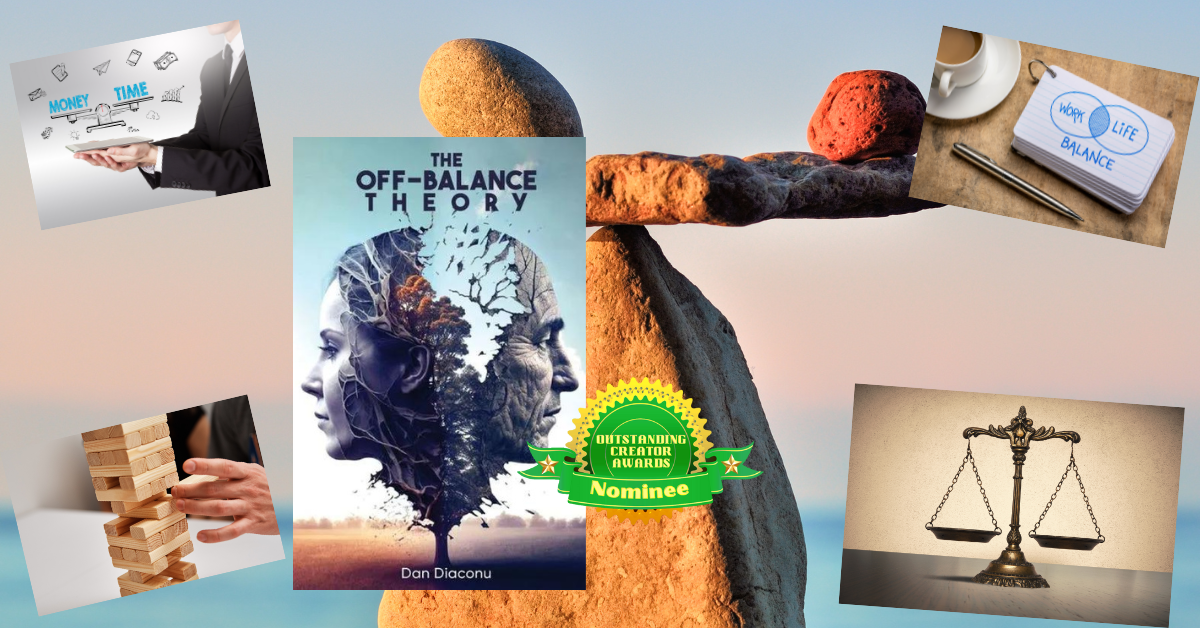
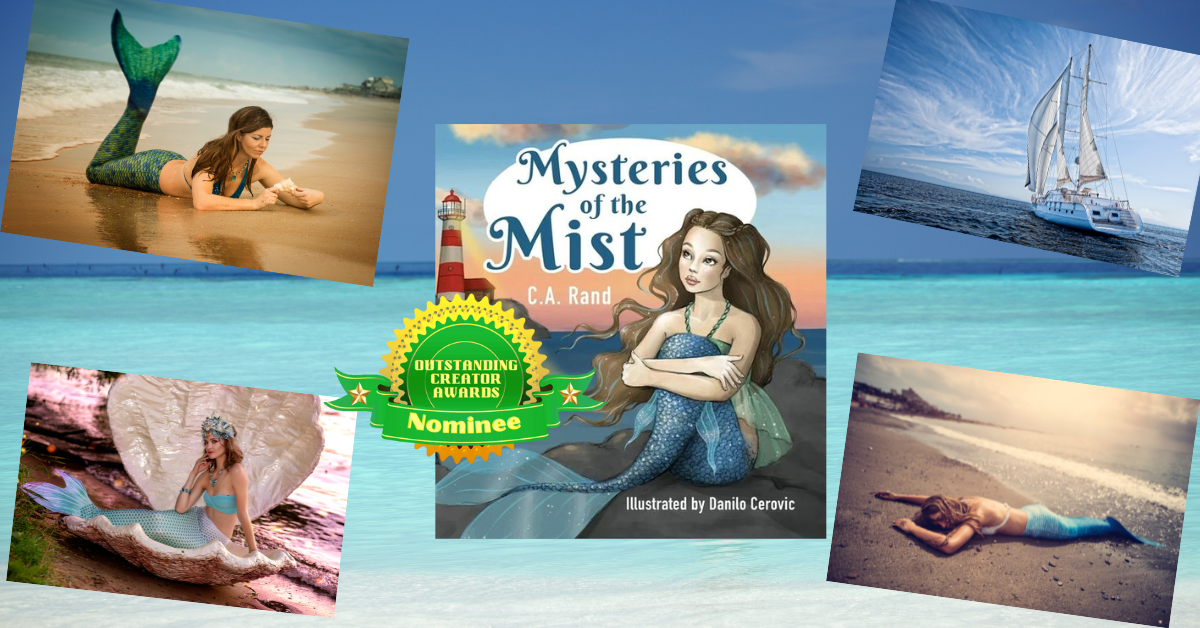
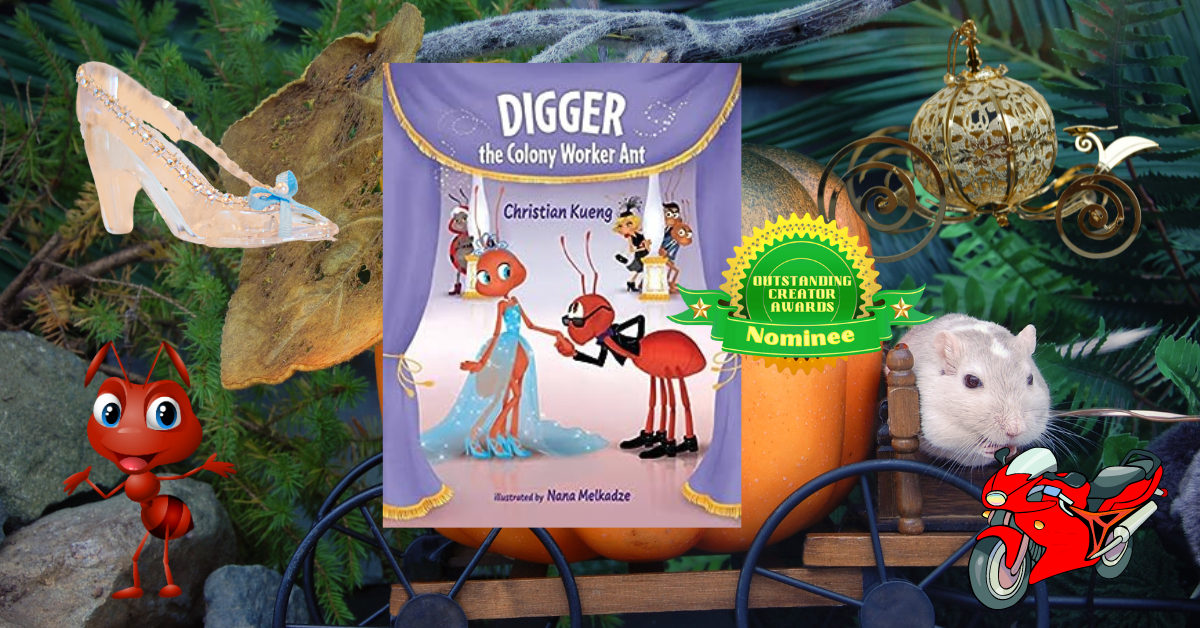
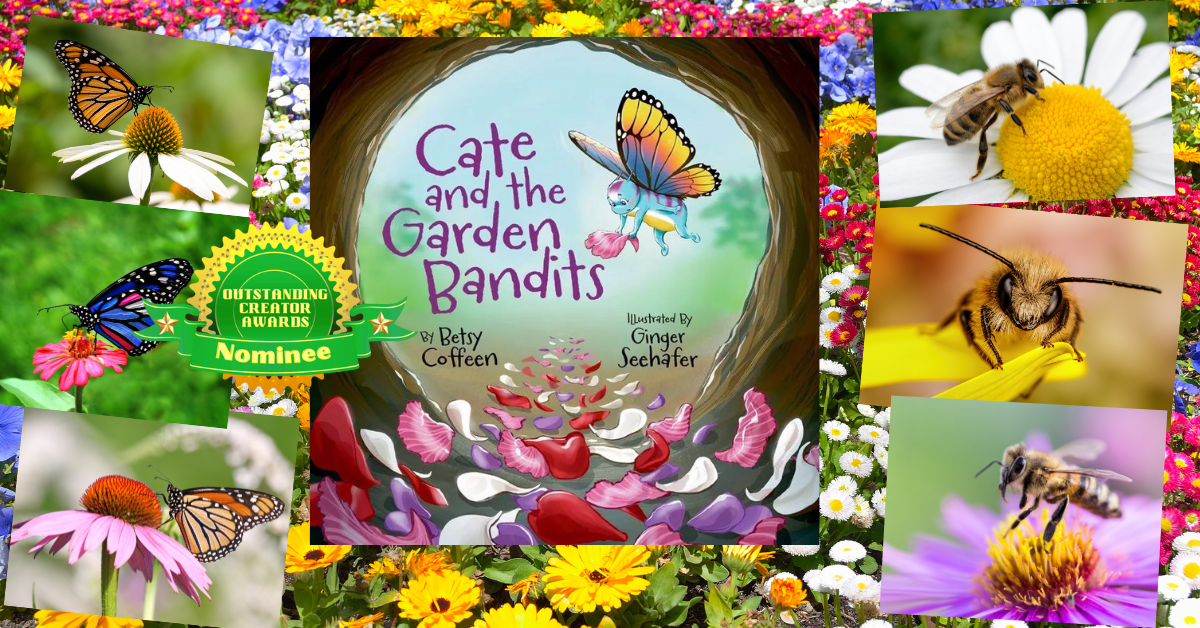



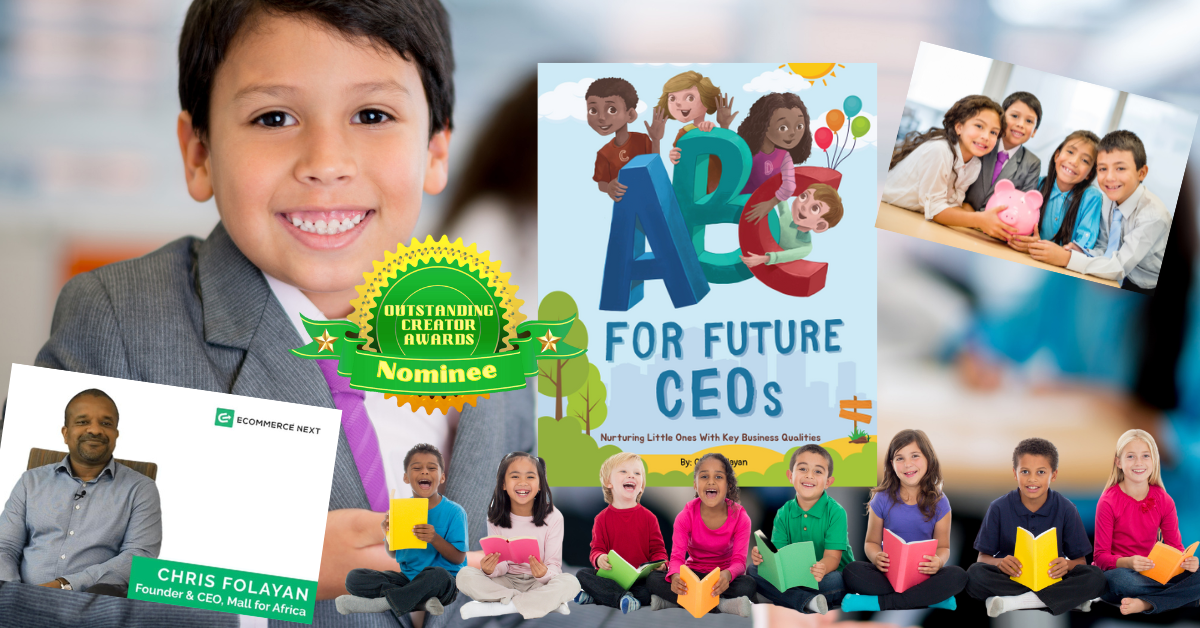
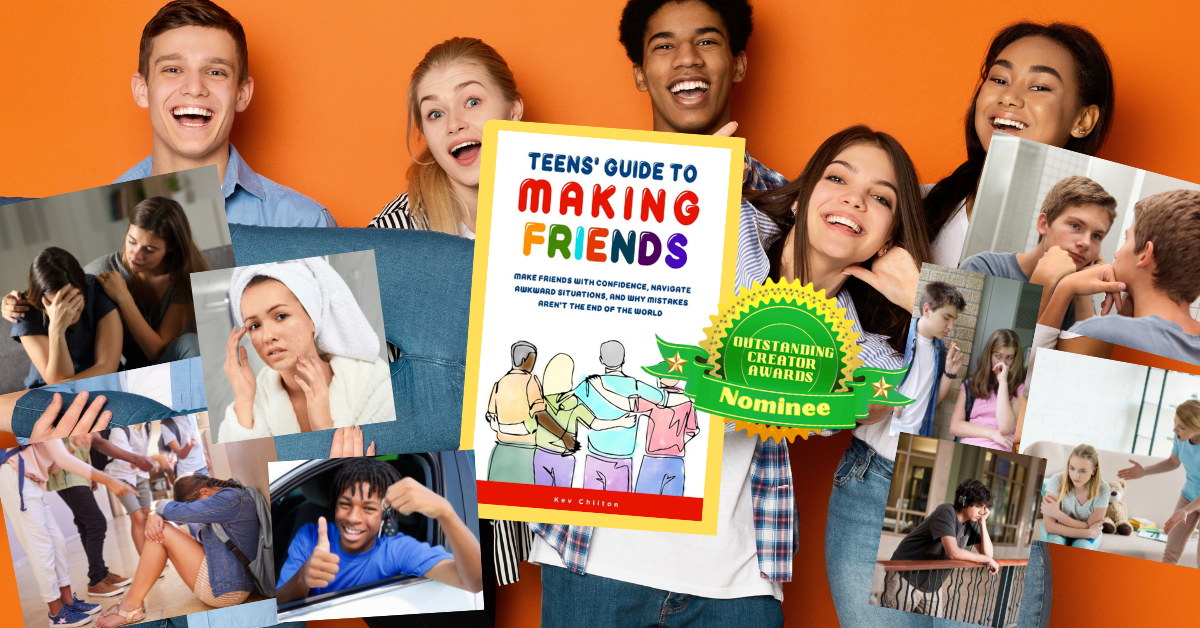
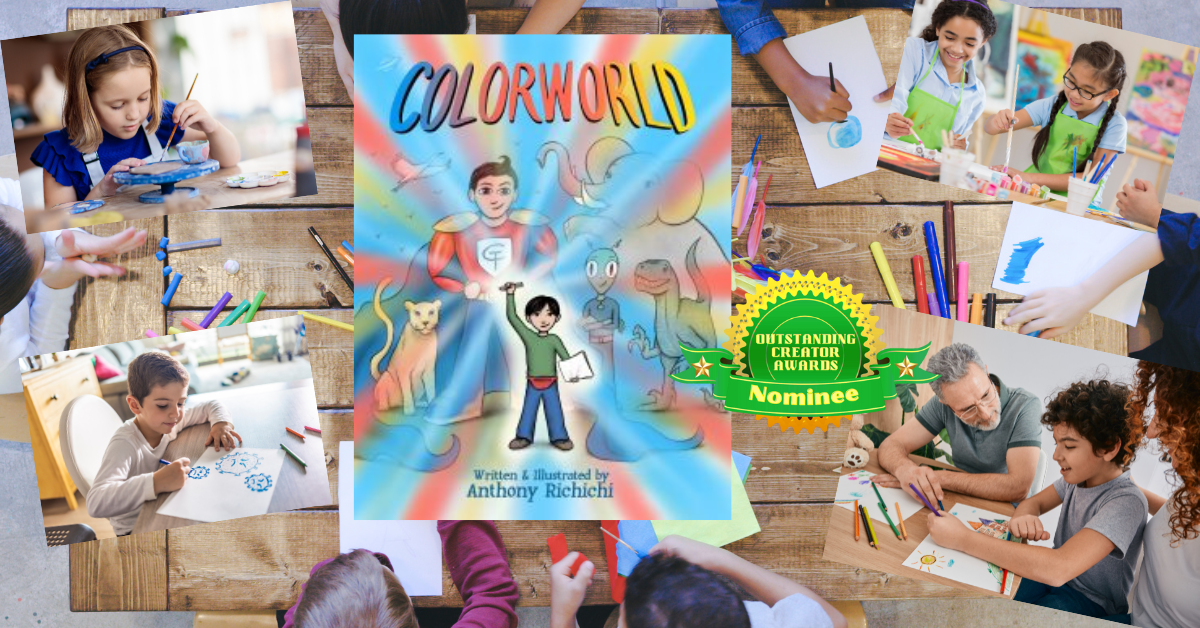
 RSS Feed
RSS Feed